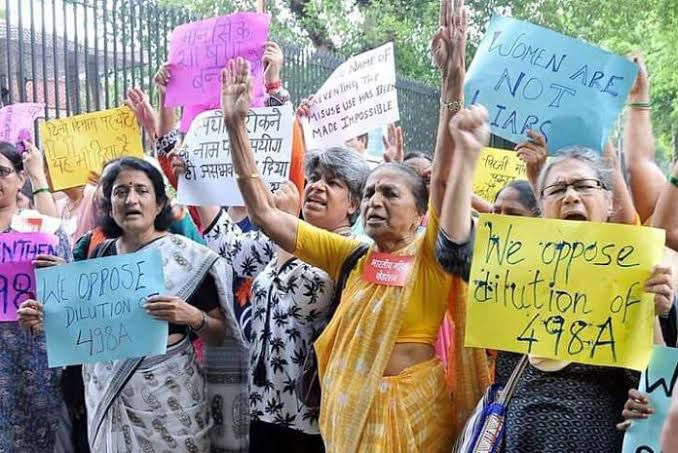Introduction
The present case is related to section 52 of Transfer of property Act, 1882 which delas with the doctrine of “Lis Pendens”. The term Lis Pendens can be defined by breaking the term “Lis” which means litigation whereas the word “Pendens” means “pending suit”. So, it can be said that this doctrine is based on two principle those are doctrine of constructive notice and doctrine of necessity. In lay man language it can be said that no new element shall be introduced when the suit is already pending.
In this case the petitioner is Rajender Singh & ors. and the respondent is Santa Singh & ors. In 1940 a suit was filed by respondent for the possession of certain land which was in the possession of the appellants.
An appeal from the judgement and decree dated 4th March, 1965 of Punjab High Cout at Chandigarh in second regular appeal. The advocate from the side of appellants were Urmila Kapoor and Kamlesh Bansal whereas from the side of respondents were S.C. Manchanda, N.K. Aggarwal, M.L. Aggarwal, S.N. Prasald and S.P. Nayar.
Section 52 of Transfer of Property Act was not meant to serve indirectly as a provision or a substitute for a provision of the Limitation Act to exclude time as the object of Limitation Act is to prevent disturbance in equity and justice by a long enjoyment. If section 52 of Transfer of Property Act was intended to strike at the running of the period of limitation it would have made it clear in the provision itself.
This case was decided by bench consisting of M. Hameedullah Beg, Kuttyil Kurien Mathew. The decision was finally given on 16th August, 1973.
Facts of the Case
The plaintiff has submitted a fitness certificate of the case for an appeal. The suit was initially instituted on 29th April 1959 for the possession against the respondent of 331 Kanals and 11 Marlas of land.
The plaintiff was the son of Smt. Premi who was the daughter of Sham Singh (deceased) and Smt. Malan wife of Sham Singh. The original owner of the plot half and half to the plaintiff and Smt. Khemi who was the younger sister of Smt. Premi. Before the death of Smt. Kehmi, she gifted her half plot to the plaintiff in 1944 so, the plaintiff had ownership over whole part. According to the customary law of Punjab at that time was that there was uncertainty about the right of daughter and power of widow to donate during her lifetime was also applicable to the parties.
8th degree collateral of Sham Singh had filed a suit on 3rd July, 1940 for possession of land in dispute. But the present suit was stayed under Indian Soldiers (Litigation) Act, 1925 from 1941 to 29th May, 1946 for the benefits of which the plaintiffs were entitled.
There was also a dispute about mutation of name in the revenue court which was decided in favour of the appellants by the Financial Commission of Punjab on 13th December, 1946. The respondent suit of 1940 renumbered in 1949 ended with the judgement and decree of Division Bench of Punjab High Court in favour of appellants on 21st November, 1958.
The plaintiff in their suit No. 179 of 1959, filed on 16th April, 1959 filed an appeal against the respondent who refused to deliver possession of the land to the plaintiffs.
Issues
- Whether the suit instituted was barred by limitation under section 142 of Limitation Act?
- Whether the doctrine of Lis Pendens provided in section 52 of Transfer of Property Act is applicable or not?
- Whether the land entered into revenue record as “Banjar” can adversely be possessed?
- Whether article 142 or 144 of Limitation Act is applicable or not?
Arguments advanced by plaintiffs
After looking at the plaint, that the plaintiff having alleged possession and dispossession for which they claimed relief by delivering back of the possession of land in dispute to them. The case squarely fell within the ambit of article 142 of Limitation Act, 1908.
Arguments advanced by respondents/defendants
The defendants claimed that they had taken possession over the whole of the land which is in dispute after the death of Smt. Kemi, issueless in 1944 since then, they had been in open, continuous, exclusive possession as owners, adversely to the rest of the world. They further contended that the bar of Limitation as well as acquisition of title by their adverse possession for over 12 years.
Cases
In Sukhubai v. Eknath Bellappa, it was held that despite the defendants-respondents having established possession for over twelve years, the doctrine of Lis Pendens prevented their rights from maturing through adverse possession.
In Bindhyachal Chand & Ors. v. Ram Gharib Chand & Ors., the issue of whether the suit is timely, when the plaintiffs make assertions invoking Article 142, becomes a matter of proving the title itself. Without proof of a subsisting title, the plaintiffs’ suit must fail. Sulaiman, C.J., noted (at page 999), “In cases falling strictly under Art. 142, where the only issue is the discontinuance of the plaintiff’s possession and not the adverse possession of the defendant, the limitation question essentially becomes one of title. According to S. 28 of the Limitation Act, if the claim is time-barred, the title is considered extinguished.” Although the extinction of title occurred during the suit’s pendency in this case, it is important to remember that an extinction of title is not affected by the doctrine of Lis Pendens merely because it occurs during the suit’s pendency.
In the case of Jayaram Mudaliar v. Ayyaswami & Ors., the court referenced the definition of Lis Pendens from Corpus Juris Secundum “Lis Pendens, which translates to ‘a pending suit,’ refers to the authority a court gains over property involved in an active lawsuit. This authority remains in place throughout the lawsuit and continues until a final judgment is rendered.”. The court explained that the necessity for this doctrine stems from the inherent jurisdiction of courts and their authority over the subject matter of litigation, ensuring that parties involved in a lawsuit cannot remove any part of the disputed property from the court’s power, thus preventing the proceedings from becoming ineffective. Additionally, the court noted that the doctrine of Lis Pendens is designed to thwart attempts by litigants to evade the court’s jurisdiction in disputes concerning rights or interests in immovable property through private transactions, which might otherwise remove the property from the court’s purview and render its judgment futile.
In the cases of Subbaiya Pandaram v. Mohammad Mustapha Marcayar and Narayan Jivanouda Patil & Ans. v. Puttabai & Ors., without any specific provision allowing the plaintiffs to exclude time, their suits cannot be brought within the 12-year limitation period. Accepting an argument that would allow the plaintiffs to bypass the mandatory requirements of Section 3 of the Act, along with Section 28 and Articles 142 and 144 of the Limitation Act of 1908, is not feasible. Courts cannot create or modify statutory laws or introduce exceptions that the law does not permit. Even in difficult circumstances, such actions are not justified. Additionally, any hardship faced by the plaintiffs is a result of their own negligence or failure to act promptly, which allowed the defendants to gain rights through the operation of the limitation law. The courts are not concerned with the wisdom or fairness of the law in this context.
Judgement
The Trail court held that the plaintiffs’ suit is barred by article 142 of the Limitation Act.
The First Appellate court also rejected also rejected the plaintiffs’ case for acquisition of possession on 13th December, 1946 and dispossession after 21st November, 1958. It accepted the arguments put forward by defendants. It observed that the “oral evidence coupled with the entries in the revenue record conclusively established the possession over the land right from 1946 till present was not that of plaintiff but it was of defendants”. It also held that the defendants’ possession became adverse when their appeal in the suit for possession was dismissed by Punjab High Court on 21st November, 1958.
This court had used section 52 of the Transfer of Property Act, even though it was a provision for excluding the period spent in litigation in computing the prescribed period of limitations. The question regarding doctrine of Lis Pendens under section 52 of the act would govern the case was referred by Division Bench to full bench of High Court of Punjab. The majority decision of Justice AN Grover was that the adverse possession of the defendants, who were appellants before the High Court, commenced during the pendency of the earlier suit and once started could not stop running because of the pendency of defendants’ suit for possession was finally dismissed on 21st November, 1958 by High Court.
The other question regarding land which was entered in revenue record as “Banjar” cannot be adversely possessed at all since it is vacant so that it must be deemed to be in the possession of the plaintiff’s oil the principle that possession follows title. It also said with the majority finding by Justice A.N. Grover of Punjab High Court would make article 144 of the Limitation Act clearly applicable. As all the elements of an open, adverse, hostile, continuous and exclusive possession of the defendants’ for over 12 years were present here.
It was also held that the applicability of article 142 of Limitation Act that it was not important issues which are framed should have the provisions of the law to be applied.
The final finding of the honourable Supreme Court was that the judgement and decree of Punjab High Court and dismiss this appeal.
An application on behalf of the plaintiffs’ seeking permission to introduce additional question regarding “Banjar land” was also dismissed. It also held that the parties will bear their own costs throughout.
Conclusion
It can se said that the act of taking illegal possession of immovable property, even if the wrongdoer be a party to the pending suit, as a “dealing with” the property otherwise than by its transfer to be covered by section 52 of Transfer of Property Act.
The only prohibition which prevents the immovable property being transferred by a party is apparently directed against some action which would have an immediate effect like that of transfer but for the principle of Lis Pendens. Taking of illegal possession is neither a transfer and it cannot be compared with transfer. they are one sided wrongful act.
Continuous illegal possession ripens into a legally enforceable rights only if the prescribed period has elapsed. It matures into a right due to inaction and not due to the action of the injured party which can approach a court of appropriate jurisdiction for redressal to regain possession.
One of the conditions for the applicability of section 14 of Limitation act is that the plaintiff should have prosecuted, with due diligence, civil proceedings founded upon the same cause of action.
Finally, the Court ultimately declined to apply the foreign doctrine of Lis Pendens, favouring instead the explicit provisions of the Limitation Act, 1963.
Frequently asked questions
- What is the background of the present case?
The 1973 case of Rajendra Singh & ors. vs. Santa Singh & ors. pertains to a dispute over the inheritance of property rights between the involved parties.
- How does this case impact future legal decisions?
The case set the precedent for future similar disputes and helped clarify legal principles regarding property rights and inheritance in India.
- What is the significance of the present case in the context of Indian legal history?
The present case is significant in Indian legal history as it provided clarity on property rights and inheritance laws, shaping future legal interpretations in similar cases.
- How did the court interpret and apply the relevant case laws in Rajendra Singh vs. Santa Singh 1973 case?
The court carefully analysed the applicable laws and previous court decisions to interpret and apply them correctly in this case.
Author: Riddhi Garg
Student at college: Kurukshetra University



